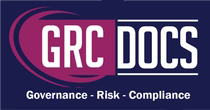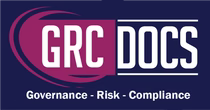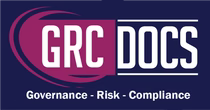SOC 2 Audit Report Preparation How To Get Ready Fast
Introduction
In today's digital age, data security is more important than ever. As cyber threats become increasingly sophisticated, companies must demonstrate their commitment to safeguarding sensitive information to maintain the trust of their clients. One effective way to do this is through a SOC 2 audit. If you're new to this process, don't worry. This guide will walk you through everything you need to know about SOC 2 audit preparation, compliance, and requirements. Whether you're a start-up or a well-established enterprise, understanding SOC 2 can significantly enhance your data security posture.

Why Is SOC 2 Compliance Important?
Achieving SOC 2 compliance is vital for any company that handles customer data. It not only assures your clients that their data is safe but also helps you identify and fix security vulnerabilities within your organization. By following SOC 2 requirements, you can reduce the risk of data breaches and enhance your company's reputation. In an era where data breaches can lead to significant financial and reputational damage, SOC 2 compliance offers a safeguard.
Moreover, SOC 2 compliance is often a prerequisite for doing business with larger clients and entering new markets. As data privacy regulations tighten globally, demonstrating adherence to SOC 2 standards can provide a competitive edge. It shows that your company is proactive in managing data security risks and is committed to maintaining the highest standards of information protection.
Benefits Of SOC 2 Compliance
-
Enhanced Trust: Clients are more likely to trust companies that demonstrate a commitment to data security. A SOC 2 report provides third-party validation of your security controls, which can be a powerful tool in negotiations and client communications.
-
Competitive Advantage: SOC 2 compliance can set you apart from competitors who may not have such stringent security measures in place. In industries where data security is critical, being SOC 2 compliant can be a significant differentiator.
-
Risk Management: It helps identify potential security risks and addresses them before they become major issues. The audit process itself often uncovers gaps in security measures, enabling you to strengthen your defenses proactively.
-
Regulatory Compliance: SOC 2 compliance can help meet other regulatory requirements, making it easier to comply with laws and regulations. Many industries are subject to multiple data protection laws, and SOC 2 can streamline compliance efforts across the board.
Preparing For A SOC 2 Audit
Getting ready for a SOC 2 audit might seem daunting, but with the right approach, you can streamline the process. Proper preparation not only ensures a smoother audit experience but also reinforces your organization's commitment to data security. Here are some key steps to help you prepare:
1. Understand the SOC 2 Requirements: Before you begin, it's essential to understand the SOC 2 requirements. These requirements are based on the trust service principles mentioned earlier. Each principle has specific criteria that your organization must meet to achieve compliance. Familiarize yourself with these principles and assess how they apply to your company. Understanding these criteria can help you tailor your security measures effectively.
By breaking down each principle into actionable steps, you can create a roadmap for compliance. This involves not only assessing your current security posture but also planning for future improvements. Engaging with experts or consultants who specialize in SOC 2 can provide valuable insights and guidance on aligning your practices with the requirements.
2. Conduct a Readiness Assessment: A readiness assessment is a crucial step in SOC 2 audit preparation. This involves evaluating your current systems, processes, and controls to identify gaps that need to be addressed. By conducting a thorough readiness assessment, you can ensure that you're well-prepared for the audit. This assessment can also help prioritize which areas need immediate attention.
The readiness assessment should be comprehensive, covering all aspects of your organization's operations that relate to data security. It should involve cross-departmental collaboration to ensure that all potential security vulnerabilities are identified and addressed. Documenting the findings of this assessment will be invaluable as you move forward with implementing necessary controls.
3. Implement Necessary Controls: Once you've identified the gaps in your readiness assessment, it's time to implement the necessary controls. This may involve updating policies, procedures, and technologies to meet SOC 2 requirements. Engage your IT and security teams to ensure that all controls are properly implemented and documented. Proper documentation is crucial, as it provides evidence of your compliance efforts during the audit.
Implementing controls is not just about ticking boxes; it's about embedding security into the fabric of your organization's operations. This might involve investing in new technologies, retraining staff, or even restructuring certain processes to enhance security. The key is to create a sustainable framework that supports ongoing compliance and adapts to emerging threats.
4. Train Your Team: Your employees play a vital role in maintaining data security, so it's essential to train them on SOC 2 requirements and best practices. Conduct regular training sessions to keep everyone informed about the importance of data security and their role in maintaining compliance. Training should be ongoing, evolving as new threats and technologies emerge.
In addition to formal training sessions, consider implementing informal learning opportunities such as workshops, webinars, or security drills. Encourage a culture of continuous learning and improvement, where employees feel empowered to contribute to the organization's security efforts. By fostering this culture, you ensure that your team is always prepared to uphold the highest standards of data security.
5. Choose the Right Auditor: Selecting the right auditor is critical to the success of your SOC 2 audit. Look for auditors with experience in your industry and a solid understanding of SOC 2 requirements. They should be able to provide valuable insights and guidance throughout the audit process. An experienced auditor can not only assess your compliance but also offer recommendations for improvement.
When selecting an auditor, consider their reputation, client feedback, and approach to audits. A good auditor should be a partner in your compliance journey, helping you navigate challenges and ensuring that your organization meets the required standards. Building a strong relationship with your auditor can lead to more effective audits and ongoing compliance support.
The SOC 2 Audit Process
Once you're prepared, it's time to undergo the SOC 2 audit. This process involves several stages, each critical to achieving a successful outcome. Here's what you can expect during the process:
1. Planning and Scoping: During this phase, you'll work with your auditor to define the scope of the audit. This involves identifying the systems and processes that will be evaluated and determining the trust service principles that apply to your organization. Proper scoping ensures that the audit is focused and relevant to your specific needs.
Effective planning and scoping can streamline the entire audit process. By clearly defining the boundaries of the audit, you can allocate resources more efficiently and ensure that all relevant areas are thoroughly assessed. Collaborate closely with your auditor during this phase to set clear expectations and objectives for the audit.
2. Fieldwork: Fieldwork is the main part of the audit, where the auditor evaluates your controls and processes. They will review documentation, interview employees, and test the effectiveness of your controls. This phase can be time-consuming, so it's essential to be well-prepared. Ensure that all necessary documentation is readily available and that your team is ready to assist the auditors as needed.
During fieldwork, auditors will examine the practical application of your security controls. This involves testing their effectiveness in real-world scenarios and ensuring they align with the documented policies and procedures. Be proactive in addressing any issues that arise during this phase, as timely responses can mitigate potential compliance gaps.
3. Reporting: After the fieldwork is complete, the auditor will prepare a SOC 2 report. This report includes an opinion on the effectiveness of your controls and any recommendations for improvement. It's essential to review the report carefully and address any findings to maintain compliance. The report serves as both a validation of your efforts and a roadmap for ongoing improvement.
The SOC 2 report is a valuable tool for communicating your organization's commitment to data security to clients and stakeholders. Use it to highlight your achievements and outline your plans for addressing any identified weaknesses. By taking a proactive approach to the report's recommendations, you can enhance your security posture and reinforce client trust.
Maintaining SOC 2 Compliance
Achieving SOC 2 compliance is just the beginning. To maintain compliance, you need to continuously monitor and improve your controls. Ongoing vigilance is crucial to ensuring that your organization remains secure and compliant. Here are some tips for maintaining SOC 2 compliance:
-
Regularly Review and Update Controls: Data security threats are constantly evolving, so it's crucial to regularly review and update your controls to stay ahead of potential risks. Conduct periodic assessments to ensure that your controls remain effective and compliant with SOC 2 requirements. Regular reviews help identify any new vulnerabilities and allow for timely updates to your security measures.
-
Stay Informed About Changes: SOC 2 requirements can change over time, so it's essential to stay informed about any updates or changes. Subscribe to industry newsletters, attend conferences, and participate in webinars to keep up with the latest developments in data security and compliance. Staying informed ensures that your organization is always aligned with the current standards.
- Foster a Culture of Security: Promote a culture of security within your organization by encouraging employees to prioritize data protection in their daily activities. Recognize and reward employees who demonstrate a commitment to data security, and ensure that everyone understands their role in maintaining compliance. A strong security culture is the foundation for sustained compliance.
Conclusion
Preparing for a SOC 2 audit may seem overwhelming, but with the right approach, you can achieve compliance and build trust with your clients. By understanding SOC 2 requirements, conducting a readiness assessment, and implementing necessary controls, you can streamline the audit process and demonstrate your commitment to data security. This proactive approach not only ensures compliance but also enhances your organization's reputation as a trusted partner.






